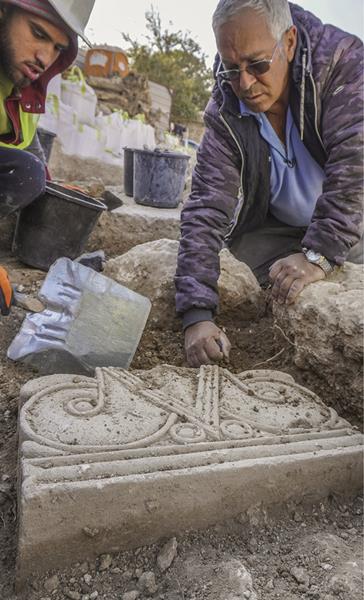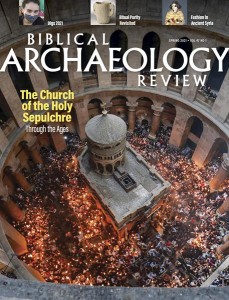
From Jerusalem, archaeologists have uncovered several proto-Aeolic (or proto-Ionic) column capitals dated to the time of the Judahite monarchy. This type of capital is indicative of monumental—often royal—Iron Age architecture in ancient Israel and Judah. The imagery on the capitals consists of a triangle and two palmette volutes. This design might be the “lily-work” described in the Bible as decorating the column capitals flanking the entrance to Solomon’s Temple (1 Kings 7:19-22).

Archaeologists found the limestone column capitals, along with dozens of other stone architectural fragments, while digging in a large structure on the Armon Hanatziv Promenade. Overlooking the City of David and Temple Mount, the structure sat outside the walls of ancient Jerusalem and dates roughly to the seventh century B.C.E.—to the reigns of Kings Hezekiah, Manasseh, Amon, and Josiah of Judah. Following Jerusalem’s miraculous deliverance from the Assyrian siege in 701 B.C.E., the city experienced a period of extensive rebuilding within its walls and expansion beyond its walls.
Already a library member? Log in here.
Institution user? Log in with your IP address.

